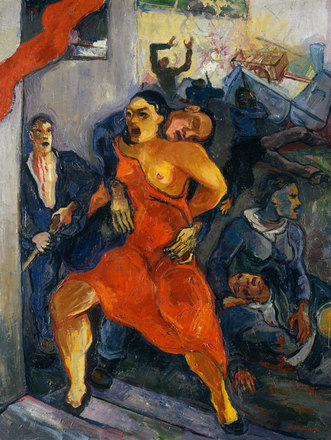‘A New Race of Men’? – Ideologies of Masculinity in Post-War Austria
In post-war Austria military masculinity became a resource that was in dispute. After the end of Austria-Hungary most of the army’s professional officers flocked to Vienna, where they made clear their overwhelmingly anti-republican stance and wanted to ensure the continued existence of a military formation. In the wake of defeat they felt that their honour had been insulted, especially as society reacted with a public ‘castration’ of masculinity.
The officers tried to compensate for their loss of power and prestige by fleeing into an idealized Habsburg past or by participating actively in the German nationalist movement. In numerous backward-looking narratives of the war, which are an ideological product of the strongly politicized and militarized culture of the early 1930s, the Imperial and Royal Austro-Hungarian soldier, especially when he is an officer, becomes an important figure of memory. The masculinity of the warriors, above all of the perfect German-Austrian fighters, is praised as it is remembered and given a new lease of life. However, in the First Republic this image is shaped not only by the ‘heroes’; the victims of the war also want their rights to be recognised. Hence they too have their marches, parades for cripples and pacifist events alongside the large-scale rallies organised by nationalist and conservative elements.
The books of wartime memories and fictitious narratives by authors from the conservative camp provide important arguments in the dispute over memory and are intended as a contribution towards a policy of creating a new masculinity. The attempts to revitalize a heroically emotional concept of masculinity can be interpreted as a reaction to a crisis of both military masculinity and Austrian identity. Fritz Weber, Luis Trenker, Alexandet Lernet-Holenia, Bodo Kaltenboeck, Karl Paumgartten and others restore the image of the Habsburg military man in various forms – as the tough fighter in the Dolomites, the Tyrolean imperial militiaman, the bold and chivalrous cavalryman, the disciplined German-Austrian officer, the aggressive daredevil. And they play this off against forms of civilian masculinity or the neurasthenic biographies of city dwellers. They glorify the comradeship of war and convey concepts of a ‘new race of men’ (Fritz Weber), praise a form of male friendship which is based on love for the mountains and show the need for a male social network of war veterans and for German nationalist associations and movements. This is how they react to the way in which a form of soldierly masculine identity is being endangered by being misjudged and forgotten and by the urbane disposition engendered by a disorderly mass society. There are apparently different attempts, rooted in national, regional and political contexts, to modify military masculinity and to establish new political concepts of masculinity.
Translation: Leigh Bailey
Amman, Klaus: Der Anschluss österreichischer Schriftsteller an das Dritte Reich. Institutionelle und bewusstseinsgeschichtliche Aspekte, Frankfurt am Main 1998
Hanisch, Ernst: Die Rückkehr des Kriegers. Männlichkeitsbilder und Remilitarisierung im Österreich der Zwischenkriegszeit, in: Transit. Europäische Revue 16 (1989/99), 108-124
-
Chapters
- Dreamers Who Turn into Heroes
- ‘Warriors on the Frozen Front’ – The War in the Alps as a Test of Manly Strengths
- The War as a ‘Technoromantic Adventure’
- Forms of Masculinity – Hierarchies, Rivals, Competitors
- Melancholy Men in Uniform – How Masculinity Becomes a Problem
- ‘Black Decay’ – Soldiers as Victims
- ‘The Flight Without End’? – The Warrior’s Homecoming
- ‘A New Race of Men’? – Ideologies of Masculinity in Post-War Austria







